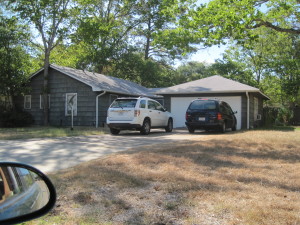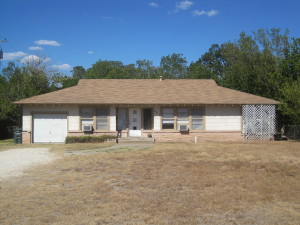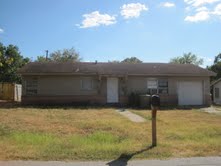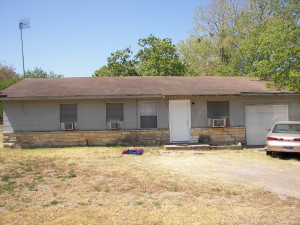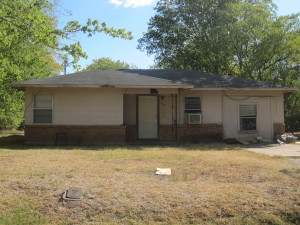Real Estate Investing – Deal Of The Year Or A Disaster Waiting To Happen?
The other day one of my wholesaler friends found an incredible real estate deal to add as a long-term investment. It was a package of 7 properties that had about $170,000 of instant equity. Since the seller was motivated, we could buy the properties at a huge discount. They were all currently rented out and producing about $4,500 a month in rental income. After a small down payment and private investor financing, my net cash flow would have been over $2,000 a month. So, why did I pass up this incredible deal?
It's all about risk tolerance. A lot of real estate investors and daytraders only think about the possible profit on a deal or trade. But professional investors look at the potential income and wealth that can be generated, but they also look at the risks associated with the deal.
Here's an incomplete list of risks to consider when investing in real estate:
- Declines in property value
- Loss of rental income
- Property repairs
- Time, energy, and money finding deals
- Managing tenants
- Many more…
Here are 7 popular tactics to limit risk in real estate:
- Buy at huge discounts (make sure you find the REAL and conservative value)
- Hire a GREAT property manager
- Set up legal entities to protect yourself
- Have an intense screening process for potential tenants
- Don't over-extend yourself
- Be conservative with values, rents, and repair costs
- Do “quick-turn” real estate deals like Deed Flipping
The Deals – 7 Properties Rated in 3 Tiers
Tier 1 Houses – Two of the deals were in good “blue collar” neighborhoods, had solid foundations, and only needed regular maintenance to keep it rented at about 2% monthly income of our purchase price. These were priced at a 65%+ discount of the retail values. Each property had about $50,000 instant equity, which gave me plenty of room in case we needed to fix-n-flip.
Tier 2 Houses – Three deals were in lower income neighborhoods, would need some repairs over the next few years, and only had about $25,000 – $30,000 in equity. Now, that instant equity isn't anything to snub your nose at, but if I had to use a “fix-n-flip” exit strategy, then I wouldn't be left with much profit. And if prices came down any more in the future, there's a good chance I would only break-even or lose money on these houses. Also, I wasn't sure if the area was desirable by the biggest portion of the population.


Tier 3 Houses – The two lowest priced homes were basically crack houses. I'm talking about a neighborhood that you wouldn't want to get out of your car, much less knock on the door. And according to the property manager, there are significant foundation issues. Also, comps were extremely difficult to find because crack houses don't sell that often. The best “as-is” estimated value I could come up with was $20,000 – $25,000 per house. And if it costed $20k – $30k to fix them up, then I'd definitely lose money on a fix-n-flip. So, my only option would be a long-term rental situation in a BAD area.
The Deal Got Even Sweeter When…
With one call we were able to get the seller to drop an additional $30,000 off the package price. The exciting part was that my friend negotiated seller financing terms. I almost bought the houses sight-unseen. This would increase the monthly cash flow and allow me to save my cash and private investors' cash for another deal. However, I quickly remembered that I needed to think through the risks, not just the cash flow and equity.
My offer & Why I Lost the Deal
After thinking for two seconds, the obvious decision for me was to cut out the tier 3 houses right away. I have ZERO experience in managing crack houses, and even if they can be profitable that's extremely outside my risk tolerance and experience.
Also, I wanted to make sure I personally saw the neighborhoods of the tier-two houses. Being the biggest batch of houses (3), I wanted to make sure that these were houses I wanted to own and maintain for decades to come. And if not, I needed an exit strategy that limited risk.
The seller was offering the package of houses at such a discount because he was extremely motivated to sell them ALL very quickly. The owner is an 80 something year old man in bad health, and his children wanted to sell them all so they didn't have to go through probate. I felt like we could really help this family by taking over all the houses for them, but I knew there was no way I'd be able to handle the Tier 3 houses.
And when I asked if they would sell just the Tier 1 or Tier 2 houses, they shut me down. I think they knew the lower priced houses would be extremely difficult to sell, and they didn't want to deal with them any more.
The next day my wholesaler friend found a cash buyer and got a $40,000 assignment fee. I felt a little sense of loss, but realized there are a ton of other deals that do fit my criteria.
Lessons Learned & Plan of Action Moving Forward
I think the biggest take-away from this is to define the risk you're willing to take on before you start analyzing properties. That way, if a property doesn't meet your “risk tolerance”, then you can back out without getting mezmerized by the income potential.
My non-nogotiables are:
- Fixer-uppers are fine, but no crack houses
- Must have multiple exit strategies (flip or hold)
- No foundation issues
Just like day traders get over-leveraged and under-capitalized, real estate investors can get themselves into sticky situations that, even if profitable, can cause more stress and time than it's worth.
If you're someone who's looking to generate income from treating real estate as a business, it's probably better to use quick-turn strategies that work in today's market. In day trading, we call that “scalping” or short-term trading. And since a large percentage of people are upside-down on their homes, it's probably best to learn a strategy like deed flipping.
If you're a true “real estate investor” looking to build wealth for the long-haul, then look to acquire properties with built-in equity and immediate cash flow. I think now's the best time to invest in real estate and I'm putting a significant time and energy into building my portfolio.
And I know there's a lot of people who would dissagree with me…
The majority of people are scared of real estate right now. And I think that's a great thing. As the great investor Warren Buffett said, “When people are scared, be greedy. When people are greedy, be scared.” Boy did I take this lesson to heart when I “got greedy” at the height of the market in 2005.
Even if this isn't the EXACT market bottom we're damn close and, if we buy right, we can build massive wealth over the long-haul.
=======================================
Here are some resources I've found relevant and helpful:
Mobilehomeinvesting.net – Awesome way to get big ROI on a small budget.
BiggerPockets.com – A HUGE resources for real estate investors
=======================================


